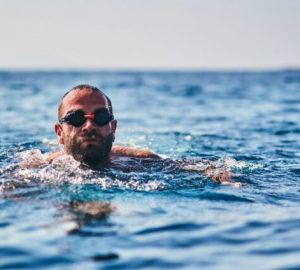Starting out – basic guide to swimming outdoors
Getting started with anything new is often the hardest part but with little kit and some basic knowledge you can start your outdoor swimming journey.
How safe is it?
Any outdoor activity comes with some risk, outdoor swimming is no different. It can be a safe and enjoyable sport or hobby. Understanding some of the risk is the first step to being safe.
- Sounds obvious but ensure you can swim at a basic level. Can you tread water, float on your back or swim confidently back to your depth if required?
- Think before you swim. Check your entry and exit points and consider currents, direction of flow and tides depending on where you plan to swim.
- Don’t mix swimming and alcohol
- Swim with other people – ideally that know the area and have swum in open water before, or with someone on dryland who could seek help if needed.
- Don’t jump in. Enter the water slowly but consistently to prevent ‘cold water shock’ – that gasping reaction to plunging into cold water.
- Make sure you’re visible in the water. Wear a brightly coloured cap and consider using a tow-float
- If someone gets in trouble, don’t put yourself at risk but call for help – dial 999 or 112.
- If you find yourself in difficulty FLOAT TO LIVE – a simple technique where you tilt your head back with ears submerged and try to relax and control your breathing. Use your hands to help you stay afloat and then call for help or swim to safety if you can.Weather, tides, currents and conditions
There is a lot to explore with conditions of swimming, as a beginner focus on fair-weather swimming to start with.
- Check the weather forecast – wind will make you feel cooler even on a warm day, rain will make changing and drying harder.
- If sea swimming check tide times, swell and wind. These can all impact the quality and safety of a swim
- With river swimming, ensure you know the direction of flow and consider the area catchment, flash floods and flow can happen in mountain rivers when there is heavy rain upstream.
- Have a basic understanding of the body of water you want to swim in and how you will enter and exit the water.
Water quality
Natural bodies of water will never be guaranteed to be free of pathogens, but some simple advice can avoid issues.
- Don’t swim after heavy rainfall. There will be more debris and water quality will be reduced.
- Cover any open wounds, cuts, or grazes. Wash hands when you get out, especially before eating.
- Check your technique – you shouldn’t take on too much water while swimming!
- Use the Rivers Trust map or Surfers Against Sewage to check up-to-date reports on poor water quality.
Swim with others
There are a number of outdoor swimming groups across the UK and world that you can join for free at any time. Search for ‘swimming’ and your area across social channels and you will easily find a group. Communities like the Bluetits and OSS are also a great place to start. Other places you can swim with support are:
- Lidos and outdoor pools, there are more than you think! These offer lifeguards and facilities.
- Supervised venues – offer lifeguards, in-water support, and facilities. You can find a list of swimming venues here.
- Lifeguarded beaches – in the UK lifeguards only operate in late spring and summer seasons. But you can find your nearest on the RNLI website.
Where to swim
If you want a more wild experience lidos and supervised venues might not be what you are looking for. But are you allowed to swim anywhere? The rules for public right to roam in England and Wales is very different to Scotland, where swimmers have the right to swim as part of their right to responsible access. There are a number of places where swimming is accepted and the battle for access continues. Some simple access rules:
- You can swim freely in the sea.
- Rivers with public navigation for boats is considered as public right to swim – just watch out for boats!
- If there is a footpath or public highway that runs alongside or across water, you can enter the water from it too. Just watch out for water that flows through private land. Although the landowner only owns the banks and river bed, not the water, it can lead to frustrating arguments while swimming, so better to avoid.
- Some reservoirs, not all, allow swimming. They are usually owned by water companies and most have a ‘no swimming’ rule, some for good reason, so find somewhere else.
- Inland bathing areas like Frensham Pond, River Wharfe at Ilkley and Port Meadow in Oxford are accepted swimming spots. Find more on bathing water quality on the Environment Agency Service.
What you will need
- Swimsuit, goggles, bright swim hat and towel for after. Simple and basic. Especially on warm day.
- Water shoe or sock, protect feet from cuts and abrasions. Also swim socks can keep toes and feet a bit warmer.
- Wetsuit – great piece of kit for getting started, will keep you warmer and more buoyant in the water.
- Tow float – good for visibility in the water, carrying dry clothes or emergency items like mobile phone.
- Warm clothes and hat for after, even in summer. Getting dry and dressed in layers can help you warm up after a period of time in the water.
- Changing robe – not essential, a variety on the market – can help for getting changed after swimming, many wind and rain proof too.
Have fun!
Don’t rush your outdoor swimming experience. Build up your experiences slowly, each time you go to the water do a little bit more and challenge yourself sensibly.








